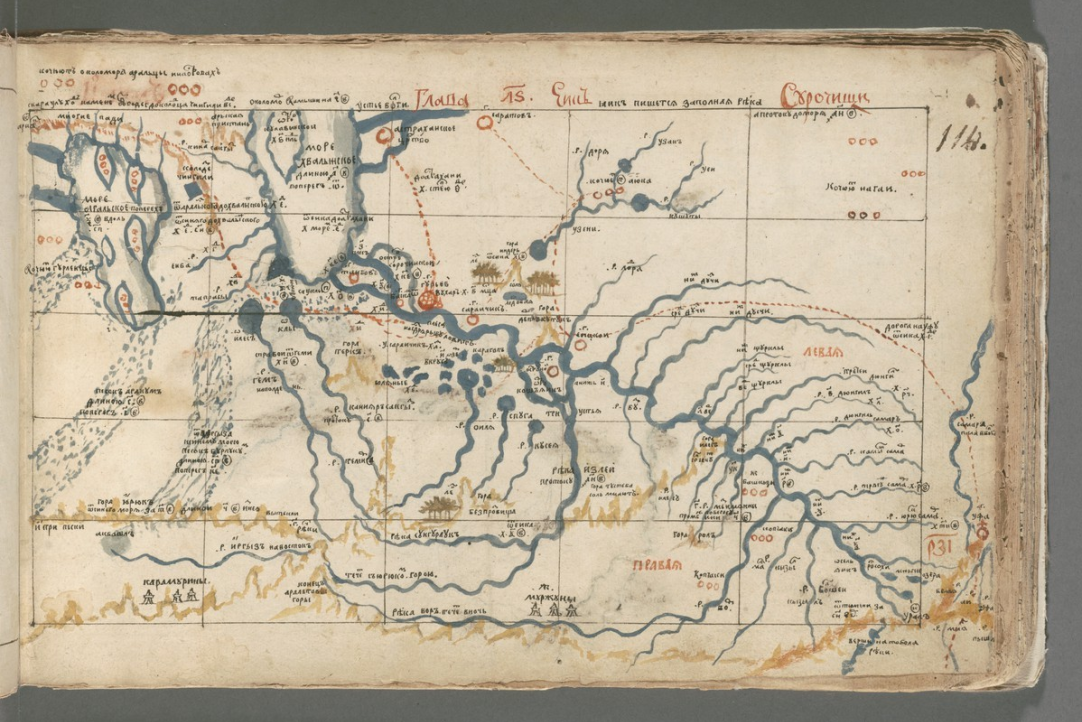Лекция Эрики Монахан «Seeing Empire and Environment in Remezov’s Khorograficheskaia Kniga»
15 декабря в рамках Лектория Международной лаборатории региональной истории России и Фонда Михаила Прохорова состоялась онлайн-лекция Эрики Монахан (Университет Нью-Мексико, США) «Seeing Empire and Environment in Remezov’s Khorograficheskaia Kniga».

“Iak River and its surroundings.” Aral Sea and part of Central Asia, l. 114
Well known among specialists, and little known in the wider historical world, Remezov’s Chorography of Siberia ( Khorograficheskaia kniga ), the first atlas of Siberia, manifests staggering ambition and a cartographical achievement that is no less staggering. (More precisely, it is a chorography, a description of territory, but the more common term, atlas, also fits.) In 175 folios of separate maps, this meticulous manuscript compilation ‘captures’ Siberia in unprecedented—even intimate—detail. Even as this atlas properly seen as a monument to imperial ambition, Remezov’s Khorograficheskaia kniga simultaneously reveals the limits of that imperial ambition. Those limits came in various forms: from rival powers, indigenous subjects with agendas that did not conform to imperial ambitions, and the natural world, supremely indifferent to human aspirations. The harsh climate, capricious weather, unforgiving waterways, and relentless distances constrained aspirations to tame Siberia. This piece highlights some of the ways in which these maps reveal tension between aspirations and realities of Russian imperial rule, both with respect to human order, and Nature’s order, at the turn of the eighteenth century.
Дата
20 декабря
2020
Рубрики
В статье упомянуты
